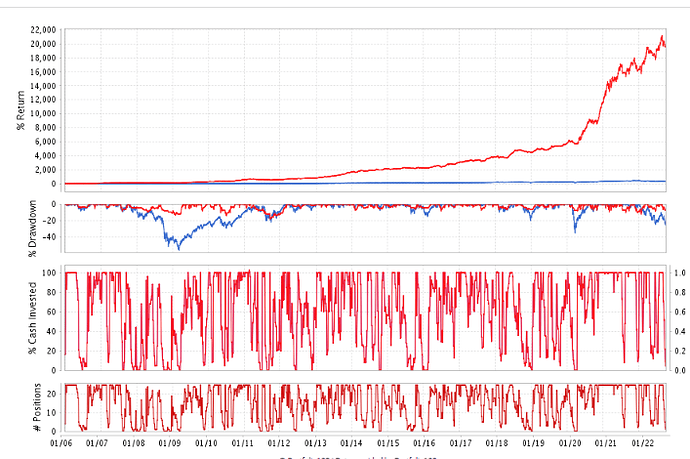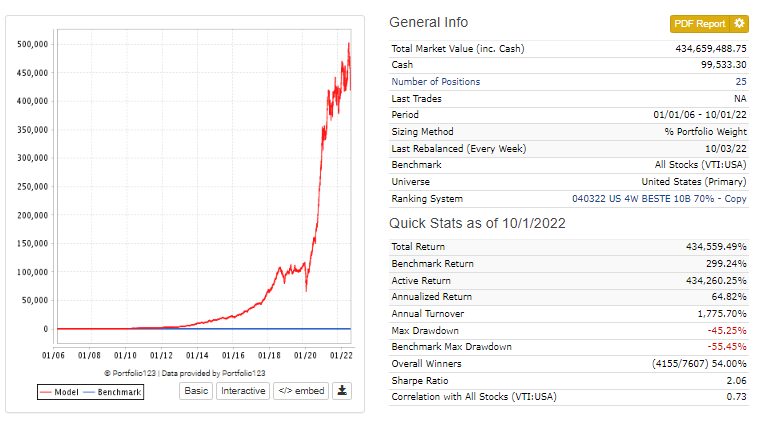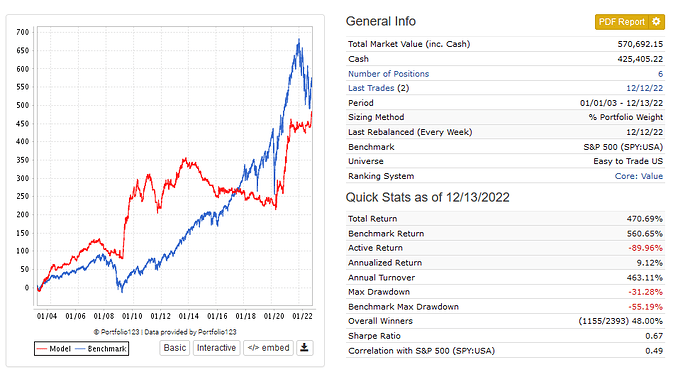Denny is right on both counts regarding the 0/1 switch.
First off, it’s easier to spot whether a rule is active or not just by looking at the first character.
Secondly, it’s easy to copy & paste the switch into all rules when developing a new sim.
Finally (with apologies for the cheap shot), without usiing the switch method, how would you deactivate these recently posted candidate rules?
(GainPct < -14 & Rank < 95) OR (GainPct < -20 & Rank < 98) OR Rank<90
or
Eval(HighestBar(#High,25,0)=1,1,0) OR Eval(HighestBar(#High,25,0)=2,1,0) OR Eval(HighestBar(#High,25,0)=3,1,0) OR Eval(HighestBar(#High,25,0)=4,1,0) OR Eval(HighestBar(#High,25,0)=5,1,0) OR Eval(HighestBar(#High,25,0)=6,1,0) OR Eval(HighestBar(#High,25,0)=7,1,0) OR Eval(HighestBar(#High,25,0)=8,1,0) OR Eval(HighestBar(#High,25,0)=9,1,0) OR Eval(HighestBar(#High,25,0)=10,1,0) OR Eval(HighestBar(#High,25,0)=11,1,0) OR Eval(HighestBar(#High,25,0)=12,1,0)





